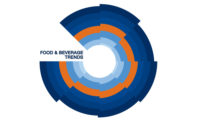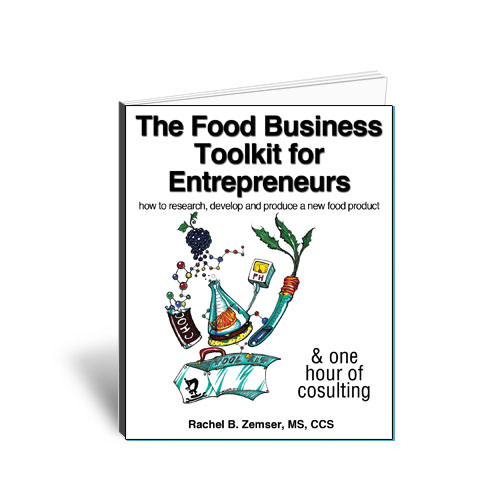Food Ordering Apps Surge in Popularity: Nearly Two-Thirds of Consumers Embrace Convenience Amid Rising Costs
Purdue University survey shows food spending per person has increased 15% since January 2022

PHOTO COURTESY OF: Purdue University
Approximately two-thirds of consumers have used a food-ordering app at least once for takeout, delivery or both, according to the September 2024 Consumer Food Insights Report (CFI). Over half have used an app for a delivery order. Of those who say they have used an app to order food, nearly half report using one for either delivery or takeout at least once a week.
The survey-based report out of Purdue University’s Center for Food Demand Analysis and Sustainability (CFDAS) assesses food spending, consumer satisfaction and values, support of agricultural and food policies, and trust in information sources. Purdue experts conducted and evaluated the survey, which included 1,200 consumers across the US.
LEARN MORE ABOUT FOOD & BEVERAGE TRENDS
“The COVID-19 pandemic changed the economy in many ways, particularly in the service economy,” said the report’s lead author, Joseph Balagtas, professor of agricultural economics at Purdue and director of CFDAS.
Earlier this year, the US Department of Agriculture (USDA) reported that spending on food-ordering apps for deliveries from full-service restaurants quadrupled between pre-pandemic months and 2022. The trend prompted the CFDAS team to partner with Valerie Kilders, assistant professor of agribusiness marketing at Purdue, to measure and evaluate consumer usage of the apps.
When ordering food online, 68% of consumers say they “sometimes,” “often” or “always” use discounts or promo codes.
Food purchased away from home is typically more costly than food prepared at home with groceries. Understandably, many consumers seek cost reductions when paying for the convenience of a prepared meal, Balagtas said. This is particularly true for consumers who spend the least on food. Half of them used discounts and promo codes “often” or “always” when ordering food online.
The report breaks down per-person weekly food expenditure into three groups: thrifty (less than $50 a week), moderate ($50 to $85 a week) and liberal (more than $85 a week) spenders. “Consumers who spend the most on food tend to seek out discounts less frequently,” Balagtas said.
The CFI survey also asked consumers about the additional fees associated with many food-ordering apps. Many attribute the fee to operating expenses of the service, whether it’s to cover fuel and time for delivery services or administration and maintenance of the app itself.
The survey further revealed that on average, consumers say they tip between 10% and 19% for a food delivery order. “Interestingly, 15% say they tip less than 10% of the total order, and 14% say they do not tip at all for this service,” Balagtas said. “We see little difference in the tipping percentages when disaggregating the responses by per-person weekly food spending.”
The sustainable food purchasing index remained unchanged from the CFI survey’s last assessment in June 2024.
“Consumers continue to purchase food that they feel is safe and fits their tastes, budgets and nutritional needs,” said Elijah Bryant, a survey research analyst at CFDAS and a co-author of the report. And fewer of them currently buy or plan to buy foods with environmental and social sustainability in mind.
“Even though consumers may value the environmental impact and social responsibility of their food, when it comes to purchasing factors, more immediate priorities like food security, taste, economic factors and nutrition drive their decisions,” he said.
Since its inception in January 2022, the CFI survey has documented a gradual positive trend in per-person weekly food expenditures. In January 2022, the figure was around $72. Last month, consumers reported an average per-person weekly spending total of $83, a 15% increase.
“Consumers are having to adjust their budgets to accommodate higher food prices to purchase the same groceries,” Bryant said. “Wage growth will be a key determinant in food purchasing behavior changes as food prices remain higher after inflation spiked in 2022.”
Based on the USDA’s questionnaire for measuring food insecurity, the CFDAS researchers estimate the national food insecurity rate to be 13%, unchanged from last month. The rate of food insecurity is highest among households that spend less than $50 on food per person per week.
“We have seen a clear correlation between income and food security in the past and see that many households that spend less on food are likely doing so due to income constraints,” Bryant said. Around 29% said they use free food resources, such as food banks, to supplement their diets. This shows the importance of these resources for people who struggle with food insecurity due to a lower food budget, he said.
Around 14% of thrifty food spenders adhere to either a vegetarian or vegan diet, relative to just 6% of moderate and liberal food spenders. Thrifty spenders also report growing their own food in either a home or community garden at a higher rate (32%) than moderate (24%) and liberal (21%) food spenders.
“We do not observe many substantial differences in the frequency of a variety of surveyed food behaviors between the spending groups,” Bryant said.
“However, we do observe thrifty food spenders choosing generic foods over brand-name foods more frequently than moderate and liberal spenders,” he said. In line with the larger share of vegans and vegetarians in the thrifty group, they are also more likely to choose plant-based proteins over animal proteins.
Looking for a reprint of this article?
From high-res PDFs to custom plaques, order your copy today!






